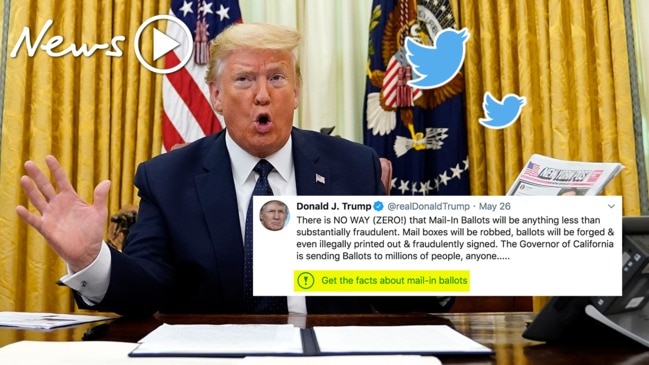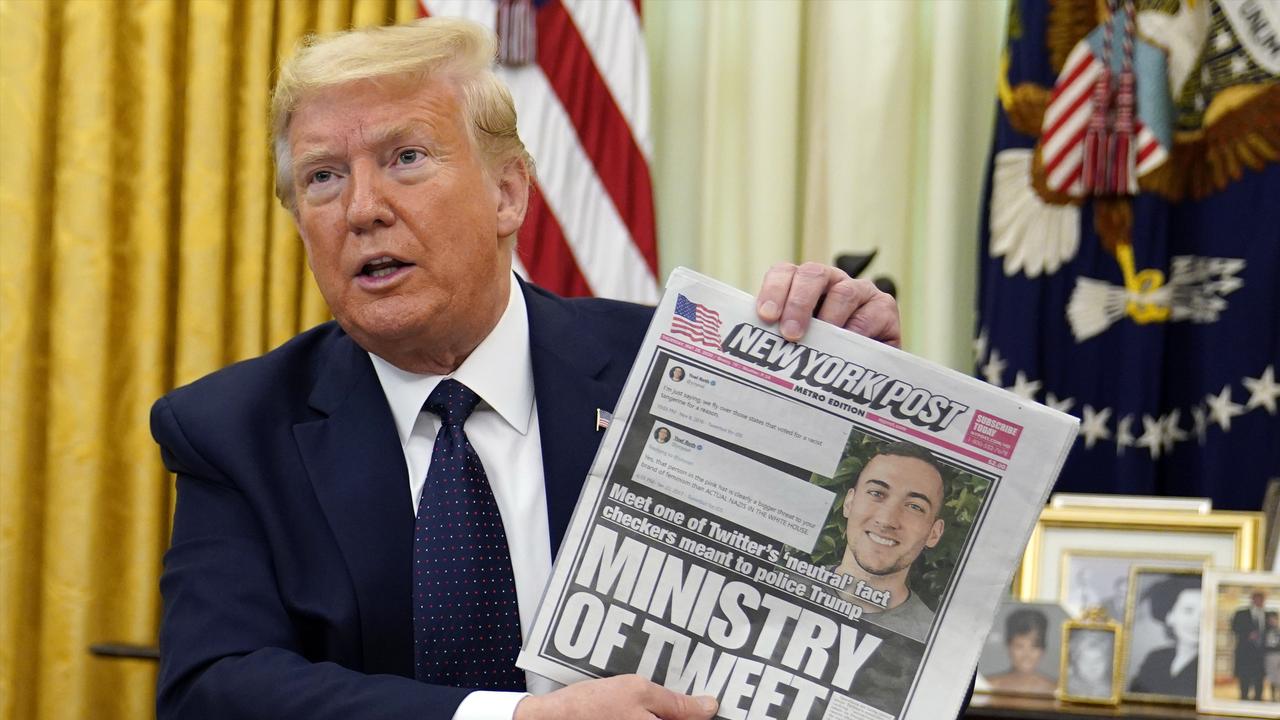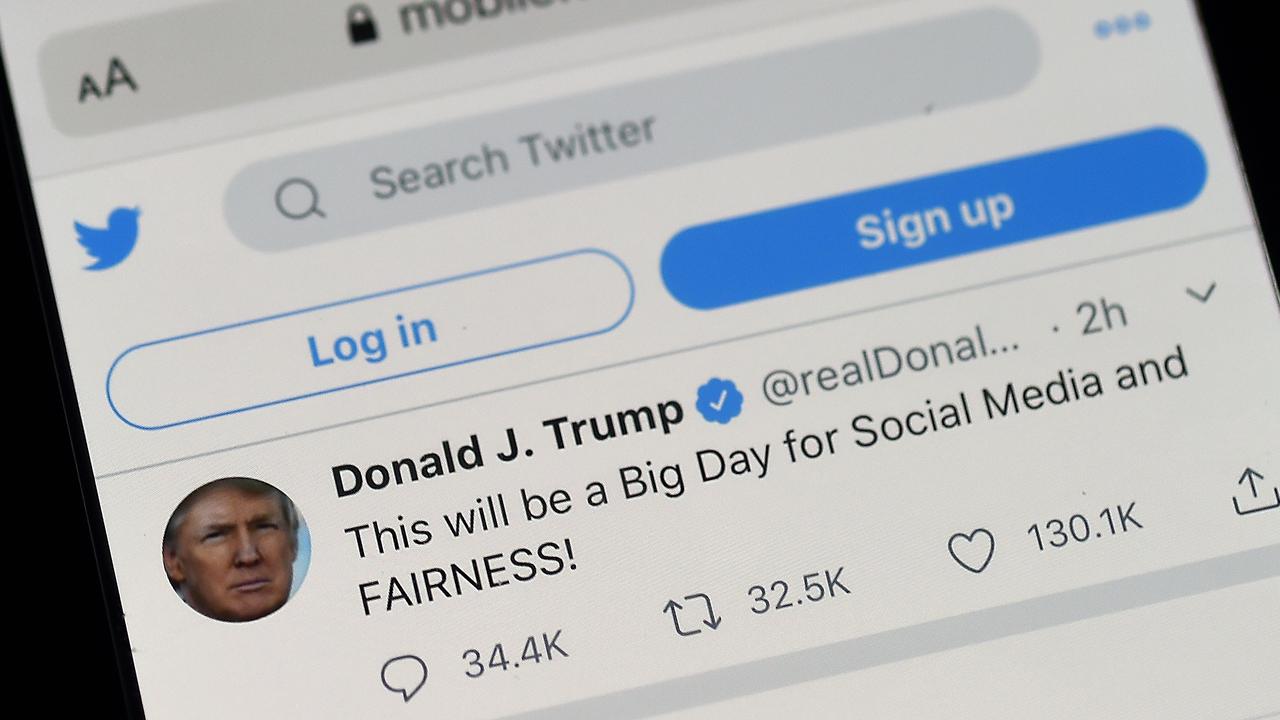Trump executive order explained: Targets Twitter, Facebook
US President Donald Trump has signed an executive order taking aim at social media, and it could change the internet as we know it today.

US President Donald Trump has taken aim at social media, signing an executive order that would effectively punish social media and tech companies for regulating or policing the content that appears on their platforms.
The order is aimed at a piece of US legislation that helped establish the internet.
It comes after Twitter placed a “fact check” on two of the President’s tweets earlier this week.
There is NO WAY (ZERO!) that Mail-In Ballots will be anything less than substantially fraudulent. Mail boxes will be robbed, ballots will be forged & even illegally printed out & fraudulently signed. The Governor of California is sending Ballots to millions of people, anyone.....
— Donald J. Trump (@realDonaldTrump) May 26, 2020
Fact check: there is someone ultimately accountable for our actions as a company, and that’s me. Please leave our employees out of this. We’ll continue to point out incorrect or disputed information about elections globally. And we will admit to and own any mistakes we make.
— jack (@jack) May 28, 2020
Mr Trump tweeted on May 26: “There is NO WAY (ZERO!) that Mail-In Ballots will be anything less than substantially fraudulent. Mail boxes will be robbed, ballots will be forged & even illegally printed out & fraudulently signed. The Governor of California is sending Ballots to millions of people, anyone living in the state, no matter who they are or how they got there, will get one. That will be followed up with professionals telling all of these people, many of whom have never even thought of voting before, how, and for whom, to vote. This will be a Rigged Election. No way!”
Twitter responded by inserting a warning underneath the tweets that read: “Get the facts about mail-in ballots.”
Twitter linked the warning to a story headlined: Trump makes unsubstantiated claim that mail-in ballots will lead to voter fraud.
RELATED: America erupts after shocking death
RELATED: ‘Clean up your act’: Trump’s threat
RELATED: Why YouTube deleted Chinese comments
Mr Trump’s new executive order relates to section 230 of the Communications Decency Act which was added to law in 1996.
The section largely absolves tech platforms like social media sites from responsibility for the content posted to it by other users, classing them closer to distributors of information (or misinformation) than publishers of it.
“No provider or user of an interactive computer service shall be treated as the publisher or speaker of any information provided by another information content provider,” read the 26 words credited with “creating the internet”.
That section was already subject to review by the US Department of Justice earlier this year, which found some parts of the law could give tech platforms too much protection, but advised against directly changing it.
The new executive order issued on Thursday will now look at changing it to provide further clarification about what it covers.
RELATED: Facebook targets conspiracy groups

RELATED: PM’s reaction to viral TikTok trend
“It is the policy of the United States that the scope of that immunity should be clarified: the immunity should not extend beyond its text and purpose to provide protection for those who purport to provide users a forum for free and open speech, but in reality use their power over a vital means of communication to engage in deceptive or pretextual actions stifling free and open debate by censoring certain viewpoints,” the executive order reads.
It also said that in Section 230, “Congress sought to provide protections for online platforms that attempted to protect minors from harmful content and intended to ensure that such providers would not be discouraged from taking down harmful material”, as well as create a “forum for a true diversity of political discourse”.
Accordingly, the order states the protections Section 230 provides should be applied with those goals in mind.
Under the order, government departments in the US now have 30 days to provide details on how much money they spend advertising on social media platforms.
The Department of Justice will also review “viewpoint-based speech restrictions” and “assess whether any online platforms are problematic vehicles for government speech due to viewpoint discrimination, deception to consumers, or other bad practices”.
The order comes after years of claims about a perceived bias against “conservative views” on social media that was supposedly limiting free speech.

Others have also expressed concerns that absolving social media platforms for responsibility for the things posted on their sites was allowing things like hate speech to stay up, spread, and attract members to extremist groups.
The executive order also notes the first amendment right to free speech in the US constitution, but earlier this week a US Federal court ruled that doesn’t typically apply to non-state entities, such as private companies and social media websites.
That decision came shortly after Twitter issued its first “fact check” on one of President Trump’s tweets, after years of pressure to do so.
The tweets weren’t removed or obscured, a link was just added to a page with further detail that cast doubt on claims made by the President that letting people vote by mail rather than crowding polling booths in a country where more than 102,000 have died from COVID-19 would lead to voter fraud.
The President doesn’t appear to have a specific opposition to the actual act of postal voting, having done it himself as recently as March.
His press secretary Kayleigh McEnany, despite defending her boss’s recent attacks against postal voting, has done it for every election she’s voted at in her home state of Florida, according to the Tampa Bay Times.



